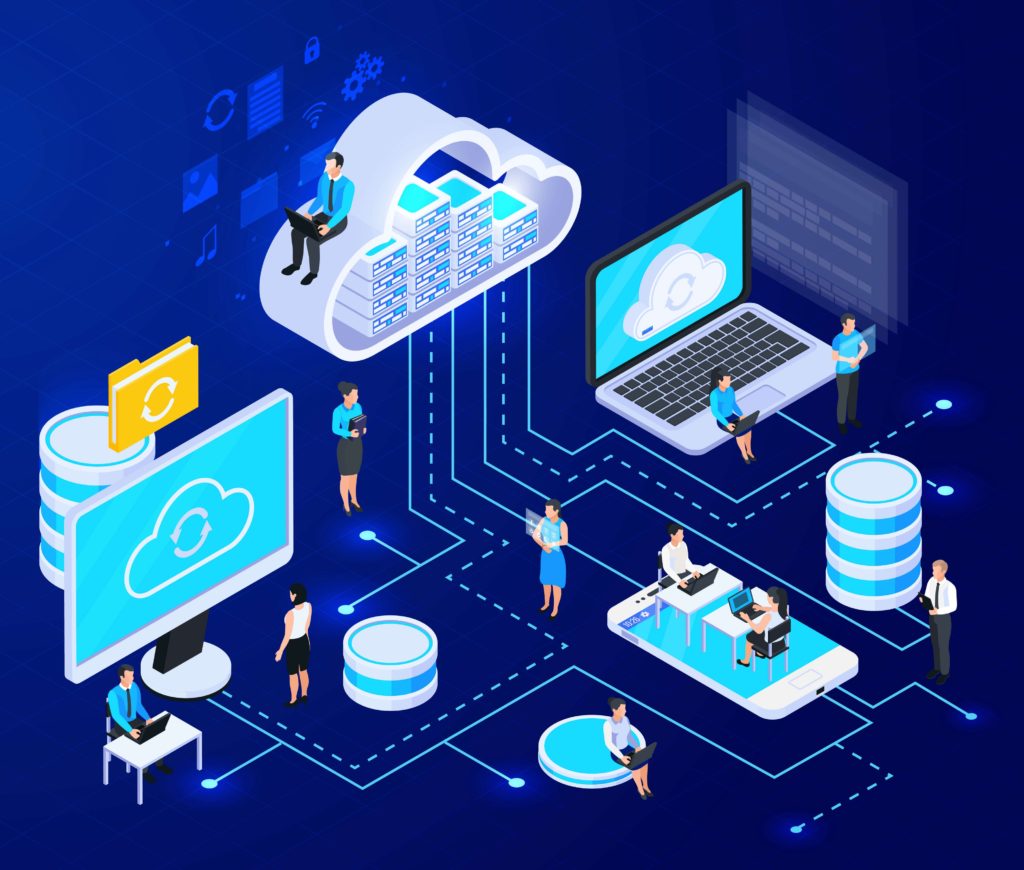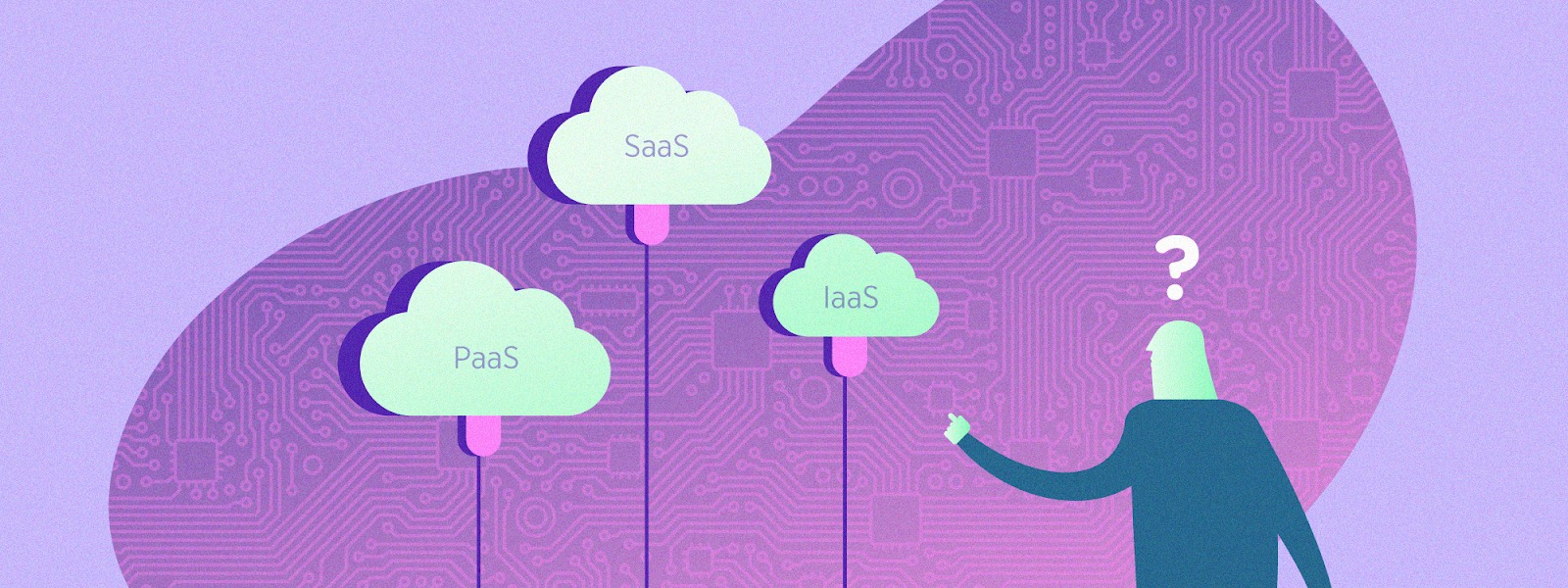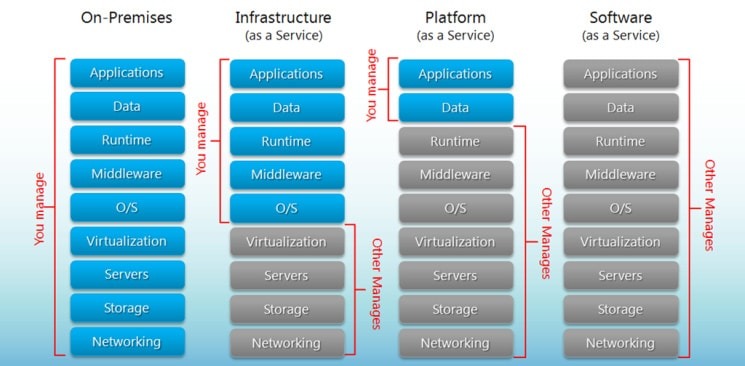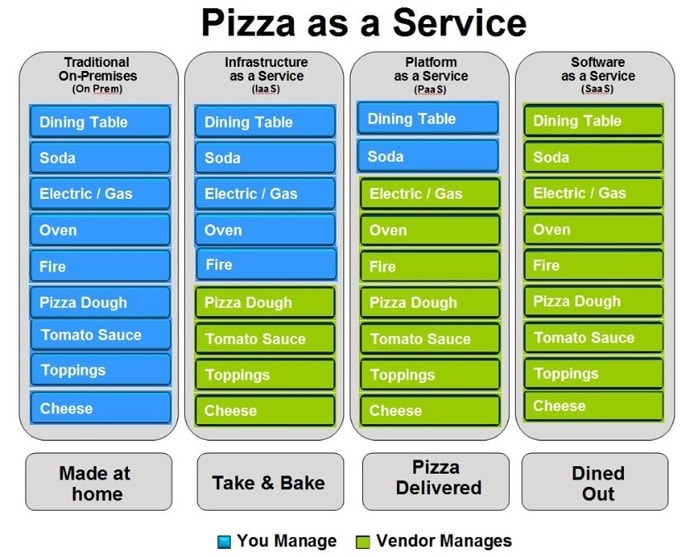IaaS vs PaaS vs SaaS Enter the Ecommerce Vernacular

IaaS vs PaaS vs SaaS Enter the Ecommerce Vernacular
What You Need to Know, Examples & More
If you’re considering moving your e-commerce business to the Cloud, here are three important acronyms to wrap your head around: IaaS, PaaS, SaaS
These are the three main types of cloud computing.

You’ve probably heard of them before; they’re all experiencing a surge in popularity as more businesses move to the Cloud.
SaaS accounts for approximately 24% of all enterprise workloads (up from 14% in 2016)
IaaS is hovering around 12% (up from 6%).
PaaS is currently the most popular model, hovering around 32% and expected to grow in 2020.
With uptake rates like these, cloud computing is becoming the norm, and many businesses are phasing out on-premise software altogether.
The Key Differences Between On-Premise, SaaS, PaaS, IaaS
Not so long ago, all of a company’s IT systems were on-premise, and clouds were just white fluffy things in the sky. Now, you can utilize the Cloud platform for nearly all your systems and processes.
SaaS, PaaS, and IaaS are simply three ways to describe how you can use the cloud for your business.
IaaS: cloud-based services, pay-as-you-go for services such as storage, networking, and virtualization.
PaaS: hardware and software tools available over the internet.
SaaS: software that’s available via a third-party over the internet.
On-premise: software that’s installed in the same building as your business.
Here’s a great visual breakdown from Hosting Advice:

Examples of SaaS, PaaS, and IaaS
Most businesses use a combination of SaaS and IaaS cloud computing service models, and many engage developers to create applications using PaaS, too.
SaaS examples: BigCommerce, Google Apps, Salesforce, Dropbox, MailChimp, ZenDesk, DocuSign, Slack, Hubspot.
PaaS examples: AWS Elastic Beanstalk, Heroku, Windows Azure (mostly used as PaaS), Force.com, OpenShift, Apache Stratos, Magento Commerce Cloud.
IaaS examples: AWS EC2, Rackspace, Google Compute Engine (GCE), Digital Ocean, Magento 1 Enterprise Edition*.
*Note that Magento 1 Enterprise can be either on-prem or IaaS, but it is generally IaaS.
The Three Types of Cloud Computing Service Models Explained
1. IaaS – Infrastructure as a Service
IaaS businesses offer services such as pay-as-you-go storage, networking, and virtualization.
IaaS gives users cloud-based alternatives to on-premise infrastructure, so businesses can avoid investing in expensive on-site resources.
IaaS Delivery
Over the internet.
IaaS Advantages
Maintaining on-premise IT infrastructure is costly and labor-intensive.
It often requires a significant initial investment in physical hardware, and then you will probably need to engage external IT contractors to maintain the hardware and keep everything working and up-to-date.
With IaaS, you can buy what you need, as you need it, and purchase more as your business grows.
IaaS solutions are highly flexible and highly scalable, and you can replace it whenever you need without losing money on your initial investment.
Another advantage of IaaS is it puts control over the infrastructure back in your hands.
You no longer need to place faith in an external IT contractor; you can access and oversee IaaS platforms yourself if you wish (without being an IT whizz).
IaaS Characteristics
IaaS platforms are:
Highly flexible and highly scalable
Accessible by multiple users
Cost-effective
When to Use IaaS
IaaS is beneficial to businesses of all shapes and sizes, as it allows complete control over your infrastructure, and operates on a pay-as-you-use model, so it fits into most budgets.
As it becomes less common to invest in physical hardware and IT infrastructure, choosing IaaS alternatives is a safer, more reliable option.
With most IaaS platforms, you get access to ongoing support and have the option of scaling up your requirements at any time.
Utilizing IaaS is a great way to future-proof your business.
IaaS Non-ecommerce Example
A good example of IaaS is AWS EC2.
EC2 provides scalable infrastructure for companies who want to host cloud-based applications.
EC2 users do not own the physical servers; AWS provides virtual servers.
So users only pay for the usage of the servers, saving them the cost (and associated ongoing maintenance) of investing in physical hardware.
IaaS E-commerce Example
Magento 1 Enterprise Edition can be either on-premise or IaaS depending on how the merchant chooses to host their store.
In the case of IaaS, the merchant is paying Magento for the licensing of the software and then using a third party vendor for the best web hosting such as Rackspace.
Merchants are able to pay for a hosting plan that meets their own needs without the cost of maintaining their own physical servers.
The merchant is still responsible for installing and managing updates to their Magento software.
2. PaaS – Platform as a Service
A PaaS vendor provides hardware and software tools over the internet, and people use these tools to develop applications. PaaS users tend to be developers.
PaaS Delivery
Over the internet.
PaaS Advantages
PaaS is primarily used by developers who are building software or applications. A PaaS solution provides the platform for developers to create unique, customizable software. This means developers don’t need to start from scratch when creating applications, saving them a lot of time (and money) on writing extensive code.
PaaS is a popular choice for businesses who want to create unique applications without spending a fortune or taking on all the responsibility. It’s kind of like the difference between hiring a venue to put on a show vs. building a venue to put on a show. The venue stays the same, but what you create in that space is unique.
PaaS Characteristics
PaaS platforms are:
Accessible by multiple users.
Scalable – you can choose from various tiers of resources to suit the size of your business.
Built on virtualization technology.
Easy to run without extensive system administration knowledge.
When to Use PaaS
PaaS is often the most cost-effective and time-effective way for a developer to create a unique application.
PaaS allows the developer to focus on the creative side of app development, as opposed to menial tasks such as managing software updates or security patches. All of their time and brainpower will go into creating, testing, and deploying the app.
PaaS Non-ecommerce Example
A good example of PaaS is AWS Elastic Beanstalk.
Amazon Web Services (AWS) offers over 100 cloud computing services such as EC2, RDS, and S3.
Most of these services can be used as IaaS, and most companies who use AWS will pick and choose the services they need.
However, managing multiple different services can quickly become difficult and time-consuming for users.
That’s where AWS Elastic Beanstalk comes in: it works as another layer on top of the infrastructure services and automatically handles the details of capacity provisioning, load balancing, scaling, and application health monitoring.
All you need to do is upload and maintain your application.
PaaS Ecommerce Example
Magento Commerce Cloud (also known as Magento Enterprise Cloud Edition) is the most common example of PaaS for ecommerce.
This enables the merchant to bundle their hosting as part of their package with Magento.
Merchants evaluating Magento go through a scoping process to determine their hosting needs which is then bundled into their monthly plan.
Merchants still have full access to edit the source code of their Magento store and can fully customize the application.
Any platform updates, security patches and general maintenance to their store would be the responsibility of the merchant.
3. SaaS – Software as a Service
SaaS platforms make software available to users over the internet, usually for a monthly subscription fee.
SaaS Delivery
Over the internet.
SaaS Advantages
With SaaS, you don’t need to install and run software applications on your computer (or any computer). Everything is available over the internet when you log in to your account online. You can usually access the software from any device, anytime (as long as there is an internet connection).
The same goes for anyone else using the software. All your staff will have personalized logins, suitable to their access level. You no longer need to engage an IT specialist to download the software onto multiple computers throughout your office or worry about keeping the software on every computer up-to-date. It’s all taken care of in the Cloud.
Another key advantage is the payment structure.
Most SaaS providers operate a subscription model with a fixed, inclusive monthly account fee. You know exactly how much the software will cost and can budget accordingly, without worrying about hidden surprises.
Most subscriptions include maintenance, compliance, and security services, which can be time-consuming and costly when using on-premise software.
SaaS providers also offer out-of-the-box solutions that are simple to set up (if you need a basic package), with more complex solutions for larger organizations.
You could have the basic software up and running within a matter of hours. You’ll have access to customer service and support along the way.
SaaS Characteristics
SaaS platforms are:
Available over the internet.
Hosted on a remote server by a third-party provider.
Scalable, with different tiers for small, medium, and enterprise-level businesses.
Inclusive, offering security, compliance, and maintenance as part of the cost.
When to Use SaaS:
SaaS platforms are ideal for when you want an application to run smoothly and reliably with minimal input from you.
Take your email server, for example.
You want to know that you’ll continue to send and receive emails without needing to fiddle with your email settings or worry about updates.
Imagine if your email server went under because you forgot to update it and you went days without email? That’s simply not an option in today’s marketplace.
If you use a SaaS platform to run your email inbox, the chances of something going wrong are very small.
And if something did go wrong, it would be up to the SaaS provider to find a solution.
You’re not only paying for the SaaS applications/products: you’re paying for peace of mind.
SaaS Ecommerce Example:
BigCommerce is an example of a SaaS e-commerce platform.
BigCommerce provides complete shopping cart software, as well as hosting infrastructure to the user, allowing businesses to create an online shop within minutes without worrying about coding, hosting, or software.
The BigCommerce platform also has regular updates that automatically roll out for users, and all the software licenses, upgrades, and hosting costs are covered in the monthly subscription fee.
Executive Summary: Summing Up SaaS vs PaaS vs IaaS
The increasing popularity of IaaS, PaaS, and SaaS is reducing the need for on-premise hosting.
Each of these cloud computing server models give users choice, flexibility, and options that on-premise hosting simply cannot provide.Some cloud computing server models are more complicated than others.
The level of system administration knowledge decreases as you go down the list in this order: On-premise > IaaS > PaaS > SaaS.
Here’s another visual breakdown from Hosting Advice, this time using pizza to breakdown each type:

Let’s recap
What are the differences between IaaS, PaaS, and SaaS?
- IaaS is there to provide you with maximum flexibility when it comes to hosting custom-built apps, as well as providing a general data center for data storage.
- PaaS is most often built on top of an IaaS platform to reduce the need for system administration. It allows you to focus on app development instead of infrastructure management.
- SaaS offers ready-to-use, out-of-the-box solutions that meet a particular business need (such as website or email). Most modern SaaS platforms are built on IaaS or PaaS platforms.
You might choose to start with one cloud computing service model or find a need for all three: that depends on the size and complexity of your business.
>>Source: https://www.bigcommerce.com/blog/saas-vs-paas-vs-iaas/#executive-summary-summing-up-saas-vs-paas-vs-iaas
Bestarion Website Admin






